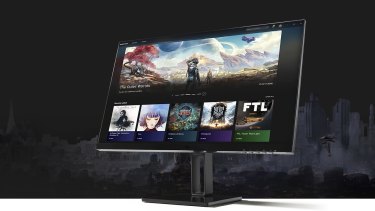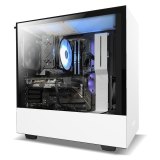
The clearest advantage of a desktop PC’s extra power and stability, unless you’re doing high-end graphics or video work, is in gaming. But a few things have changed in recent years that makes this fact relevant for a lot more people. Games are transitioning from a retail model to a Netflix-style subscription model, which is great for people who want an instant and vast library of games, and a PC offers the most choice.

Steam is still king for buying and owning games, but Game Pass gives you access to a huge library for $11 a month.
PC Game Pass has all of Microsoft’s own games and a hundred more, EA and Ubisoft offer all their games on subscriptions, and even charity-focused Humble Bundle (which lets you pay what you want, and keep the games) has a subscription tier.
A powerful PC can cost more than twice what you’d pay for the latest game console — the PlayStation 5 and Xbox Series X are each $750 — but between sales and subscriptions you can save a lot on games. Plus a PC is also your general computing or work machine, and both Xbox and PlayStation games are now being published on PC, so it’s essentially one machine to play most of your games.
The other thing to consider is virtual reality. VR has had a massive spike in popularity recently, primarily owing to new headsets like Meta’s Quest 2 that don’t need to be connected to a PC or external gear. But all those new VR fans are likely to find that the most impressive and complex (and most numerous) collection of VR experiences is on computers.
Loading
Fortunately, the Quest 2 pairs well with a PC. As long as you have a decently fast router, and your PC is plugged into your network with a cable rather than Wi-Fi, you can beam the latest VR experiences wirelessly from your computer straight to your eyeballs. This will only get more handy as social and work-based VR applications become more common.
It’s easier than you think
All-in-one PCs like Apple’s iMacs, and compact off-the-shelf units made with bespoke parts, have their place. But to get the full utility of a desktop PC you’ll want one put together from modular, easy-to-replace parts. Not only is this the most cost-efficient and most flexible route, it means cheaper and easier repairs plus the ability to upgrade parts as you go instead of throwing out your old machine and buying a whole new one every four years.
Physically building a desktop PC yourself is not difficult these days — you may not even need a screwdriver — but planning and sourcing compatible components is the tricky part. However, there are many shops and websites that will build a PC to your specifications, which gives you the benefits of a desktop without the hassle, and usually comes with a warranty. Recently, I tried a PC from NZXT, a global PC builder with a shop in Melbourne, and while it does take custom orders the main selling point is its preset models. Especially for those looking to get into PC gaming, a standardised build lets you see exactly how your machine will perform before you buy it.

NZXT’s “Starter Pro” PC.
For example, the machine I tried was NZXT’s “Starter Pro” configuration, which the company said would achieve 110 frames per second in Grand Theft Auto V at Full HD, and if anything it performed slightly better. I also surmised from its list of estimates that most new games would run well at mid to high settings, and indeed they did. Halo Infinite for example had no problem at 1440p and 60 frames per second on its high graphics preset.
At $2600 this PC would only make sense if you really were replacing game consoles, a workstation and mobile machines with it, but I was impressed by how close the price was to the sum of the individual parts. The graphics card, a GeForce RTX 3060, could cost you almost $1000 on its own, plus there’s a 1TB NVME SSD for storage.
You could also opt to have a tower PC built with no discrete graphics card, relying on the integrated graphics in your chosen processor which will be fine for work and good for light gaming, and cut out a lot of the upfront expense. You can always add a card later.
Get news and reviews on technology, gadgets and gaming in our Technology newsletter every Friday. Sign up here.



























